St Mary's Pews, Stainburn
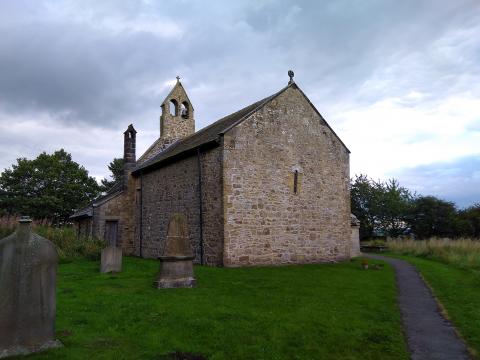
St Mary’s Church in Stainburn is one of those wonderfully attractive churches managed by the Churches Conservation Trust. This means it is seldom now used for worship, but the Trust is generally more amenable to keeping it open for visitors than some Covid-dreading parson might be. I once lamented the number of churches for whom the Trust had become custodian. Nowadays, so few parish pulpits proclaim the gospel of grace that such churches’ closure make little impact on gospel witness. Be that as it may, St Mary’s has some treasures within, about one of which I shall wax lyrical now.

So what excites me so? The wonderful Norman chancel arch? The medieval font with its charmingly naïve carvings? No, no, ‘tis the pews. Pews, which is a name for wooden benches in churches, is something of a dirty word at Martin Top. Folk who have joined us from more salubrious establishments bewail their discomfort; individual seats which can be moved and stacked prove a more versatile arrangement, allowing greater use of the floor space. Be that as it may, the pews at St Mary’s would have been thought a real luxury in their day, and they reflect an important theological shift in the English church.
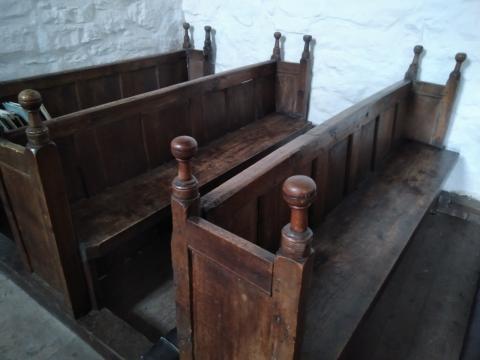
There are two types of pew at St Mary’s. The ones with a particular spindle-type finial at their end, date from 1630. The plainer, more solid type are from the sixteenth century, almost certainly from the time of the first Queen Elizabeth. I’ll confess to misjudging their age by a century when, on my hands and knees, I inspected them. Tudor pews are pretty rare! I detect a few eyes rolling here. “So what?”, you ask, supposing you have even read this far down.
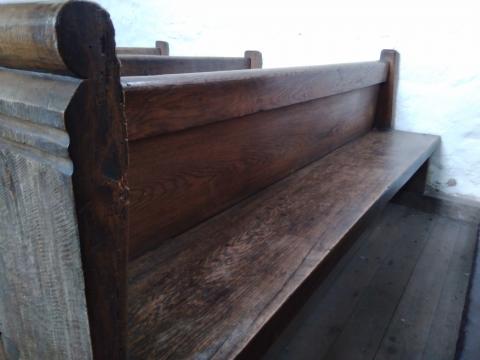
Well the church in England before the Reformation based its worship on the Mass. A priest would have stood by the altar, his back to the congregation, mumming his Latin prayers over bread and wine which he would have consumed. There would have been no seating in the nave, the main body of the church, where the congregation stood to watch the priest perform the Mass. Some stone or wooden benches around the walls might have been provided for the elderly and lame, but other than that, it was like an old-fashioned football ground, but without the terraces. After 20 minutes’ watching, you might have glimpsed the raised wafer or chalice, at which point you might have crossed yourself and been pleased to have seen the very body of Christ. When it was all over, off you went.
At the Reformation, watching wafers and a bloke imbibing wine was not deemed to be the height of worship. Worship’s focus would be hearing a sermon, a preacher entering a pulpit to expound some text and proclaim Christ’s finished work. As this took more time and a greater degree of concentration, it was unreasonable to make people stand for this period. Pews were therefore introduced, benches upon which parishioners might sit and listen without the distractions of having to keep balanced or to avoid blocking a neighbour’s vision. That St Mary’s spent money to buy such solid benches, so early son, suggests they were serious about hearing the gospel preached.
Even with cushions, our pews are not like the armchairs of home nor the padded loungers enjoyed by some congregations. Yet those who deign to occupy them still, methinks, hear the faith once delivered.
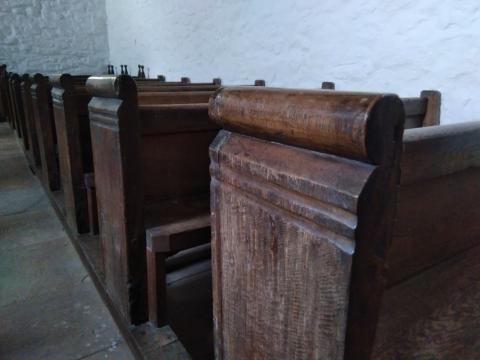
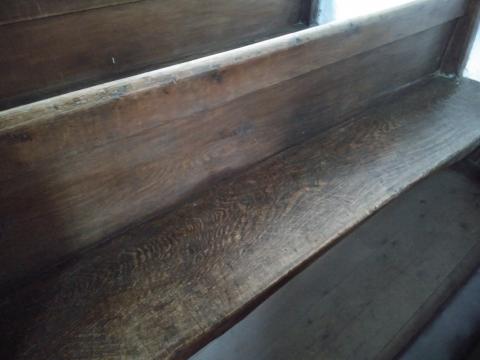
- Log in to post comments


 Sunday Worship 10.45am & 6.00pm
Sunday Worship 10.45am & 6.00pm